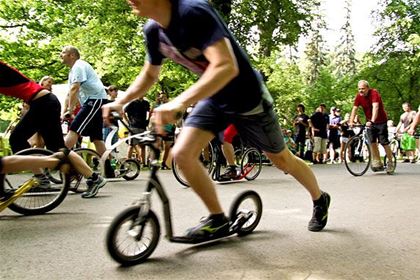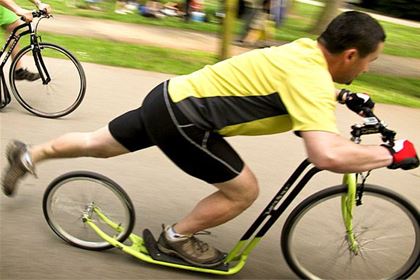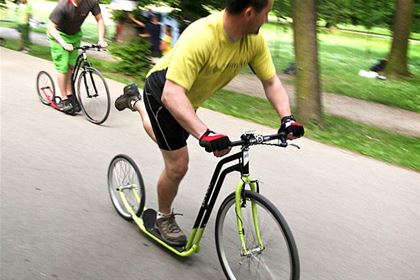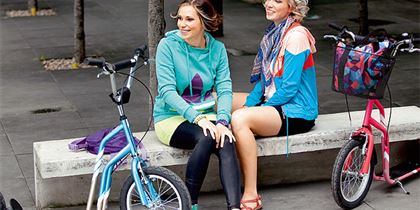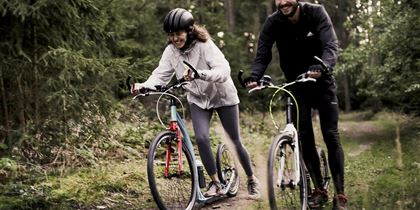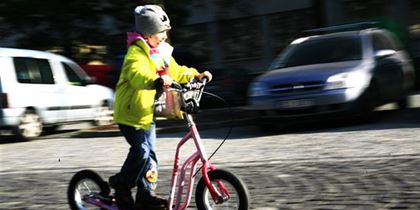How To Correctly Push Off On A Scooter
| Dan Pilát, Jitka SlavíčkováDo you think riding a scooter is not exactly rocket science? Well, you're both right and wrong - a good push off technique will help you save energy and optimize your ride. Let's look at it more carefully.
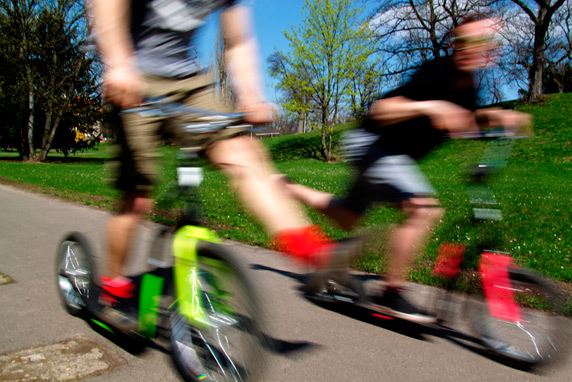
Comfortable Riding Position
Everything starts with your position, which first of all should be relaxed. Always have the whole surface of your foot on the footstep, don't grip the handlebars too tightly and don't lean your hands against them - you'll just tire them out unnecessarily. Basically - make yourself comfortable.
Basic Push Off
As you know, it is the so-called "push off leg" that creates movement on the scooter (the leg that is not standing on the footstep). How much force should you put into the push off? According to experts, it’s best to stretch your leg to about the middle of the front wheel. At push off, you should only touch the ground with the front of your foot. The movement should be flexible, so you shouldn't hold the handlebars too tightly or have tension in your elbows.
After push off, don't be afraid to continue riding with your leg outstretched behind. This is the most efficient ride as it offers the least wind resistance.
Stomping Uphill
When going uphill, choose short and more frequent push offs.
Riding uphill is much more demanding. Shorter, more frequent push offs are best for keeping up a constant speed and using the least energy. Position your push off leg only one foot’s length in front of the standing foot (the foot on the footstep) and finish the push off about the same distance behind. In this terrain the key is not the force but the frequency - short, rapid push offs are most effective for climbing.
Push Offs For Racers
You can acquire high speed through stretching your leg out long and pushing off with force.
If you are more interested in speed than efficiency, stretch as far as possible. Lift the push off leg as high as you can (you can help yourself by standing on your tiptoes with your standing foot), swing as fast as you can and push off with force. Racers prefer to have their push off leg up front slightly bent, whilst the rest of us can straighten it - it depends on what's better for you. When pushing off, lean your body forward as this helps with acceleration. Your whole lower leg should be active in the push off - the longer the push off lasts, the more speed you will gain. Don't worry about overdoing it - when looking at real racers, you can see that their scooters often jump a little, especially during their push offs.
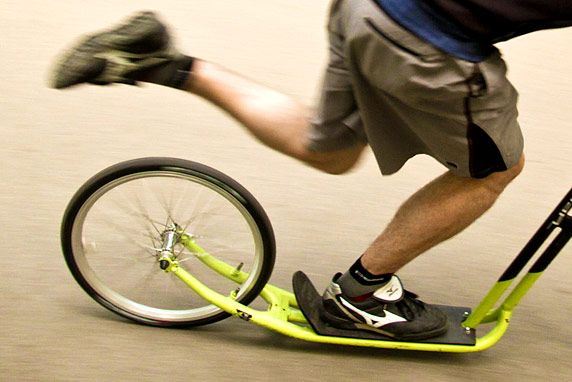
Don't Forget To Switch Legs
Switching between your left and right leg for push off helps avoid degrading your “engine”!
No matter what push off technique you are using, it's clear that your leg will get tired after a while. So that you don't over-exhaust one side of the body, it's important to switch legs. You can do this by either ”jumping over“ or ”twisting“.
The main difference between the two techniques is in the contact of the foot with the footstep. As the name suggests, with the "jumping" technique you switch feet during a jump, whereas in the "twisting" technique, you switch them on the footstep. In "twisting", you sink your weight into the heel of the standing foot and twist the tip of your foot to the side. The other foot is then placed in its spot, and weight is transferred to it on the footstep. The foot that was standing can now be the push off foot. Athletes tend more to use the jumping method, despite it being harder to learn, because it doesn't disturb the push off rhythm.
(Partly based upon the paper "Application of riding scooters for the visually impaired" by Šárka Kittlerova, 2006, Faculty of Physical Education and Sports, Charles University in Prague, supervised by Associated Professor MUDr. Staša Bartůňkova, CSc.)
